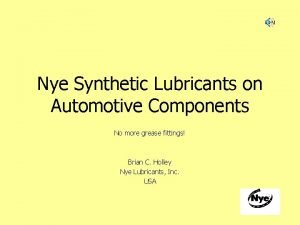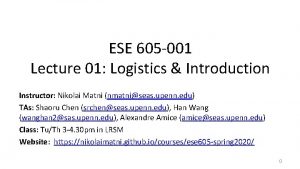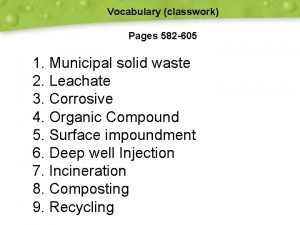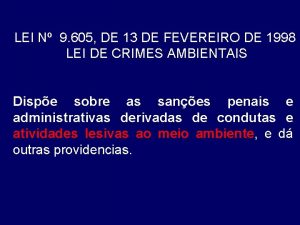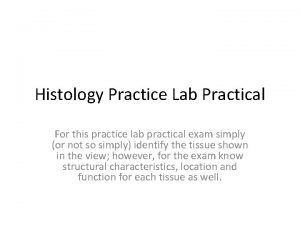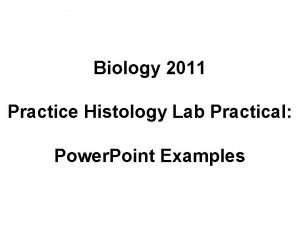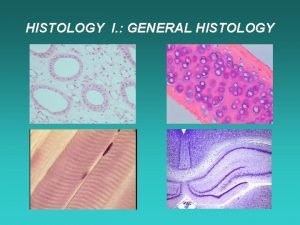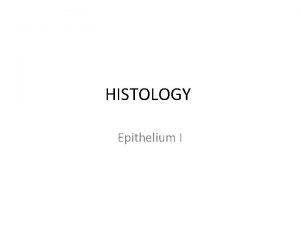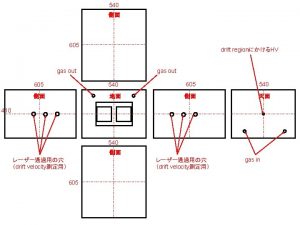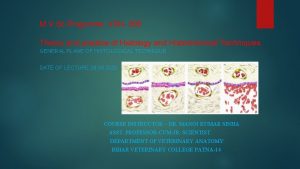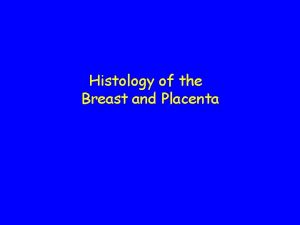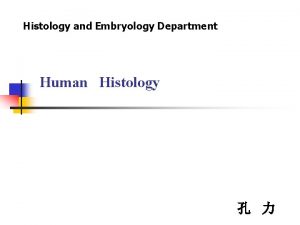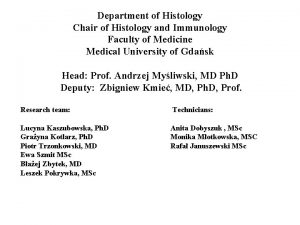VAN 605 Theory and practice of Histology and












- Slides: 12

VAN- 605 Theory and practice of Histology and Histochemical Techniques. GENERAL PLANE OF HISTOLOGICAL TECHNIQUE DATE OF LECTURE 29. 09. 2020 COURSE INSTRUCTOR – DR. MANOJ KUMAR SINHA ASST. PROFESSOR-CUM-JR. SCIENTIST DEPARTMENT OF VETERINARY ANATOMY

Introduction Histological technique deals with the preparation of tissue for microscopic examination. The tissue make them hard so that very thin section i. e 4 to 5 micron. Good staining should be possible. After staining the section represent the histology of the tissue.

Techniques 1. Fixation 2. Dehydration 3. Cleaning 4. Embeding 5. Cutting 6. Staining

Fixation is the process by which the constituents of cell and tissue are fixed in physical and chemical. Fixation is required to Prevent post mortem changes such as putrefaction and autolysis. Preserve various cell constituents in as life-like manner as possible. Protect by hardening the naturally soft tissue, thereby allowing easy manipulation during subsequent processing. Convert the normal semi-fiuid consistency of cells to an irreversible semi-solid consistency. Aid in the visual differentiation of structure by application of biological dyes and chemicals. Ten percent buffered neutral formalin is the most widely used fixative because it is compatible with most stains.

Properties of an Ideal Fixative Prevent autolysis and bacterial decomposition. Preserves tissue in their natural state and fix all components. Avoid excessive hardness of tissue Allows enhanced staining of tissue. The fixation can be carried out at room temperature. Tissue should not be frozen. Fixation time of several hours is needed Volume of fixative – 10 -20 times of the volume of the specimen.

Factor affecting of fixation Size and thickness of piece of tissue. Tissue covered by large amount of mucous fix slowly Tissue covered by large amount of blood also fix slowly Fatty and lipomatous tissue also fix slowly

Certain agents used as fixatives 1. Formaldehyde (Formalin): - 10 ml formalin and 90 ml distilled water = 10% Formalin neither preserves nor destroys fat, and is good for complex lipids, but has effect no neutral fats. Formalin is not a fixative for carbohydrates, it preserves the proteins which in turn traps glycogen so that it is not easily dissolved. 2. Glacial acetic acid 1. It does not fix lipids or carbohydrates. 2. It leaves tissue soft and prevents hardening by subsequent use of alcohols. 3. Alcohol 1. It acts as a reducing agent it is slow of penetration hardens and shrinks the tissue. 4. Mercuric Chloride 1. It precipitates all proteins.

2. It facilitates staining with most dyes making the colors more brilliant. 3. It neither fixes nor destroys carbohydrates. 5. Picric acid 1. It precipitates all proteins. 2. It leaves tissue soft, tends to make for easier staining. 6. Potassium Dichromate 1. It fixes cytoplasm without precipitation. 2. It preserves phosphatides and is used for mitochondria.

Preparation of solution Formalin Saline solution : - 40% formalin……… 100 ml Sodium chloride…… 9 gm Tap water……………. 900 ml Buffered neutral formalin solution : - 40 % Formalin…………… 100 ml Sodium acetate…………… 20 gm Tap water…………………. 900 ml The best overall fixative, therefore, strongly recommended for routine use. Formalin Ammonium Bromide solution: 40% Formalin neutralized… 15 ml Ammonium bromide…………. 2 gm Distilled water………………. . 85 ml

Formalin Alcohol Acetic Acid Solution: - 40% Formalin……… 10 ml Alcohol, 80%. . . 90 ml Glacial acetic acid…… 5 ml Formol Calcium Solution : - Calcium chloride, anhydrous…………. . 1 gm 40 % formalin………… 10 ml Distilled water…………. 90 ml Zenker’s Solution : Distilled water………… 1000 ml Mercuric chloride……. . 50 gm Potassium dichromate……. . 25 gm Sodium sulfate……………. . 10 gm Bouins’s solution : - Picric acid, saturated aqueous solution………. . 750 ml 40 % Formalin……………… 250 ml Glacial acetic acid…………. . . 50 ml

Conroy's Solution: - Absolute alcohol……. . 60 ml Chloroform…………. 30 ml Glacial acetic acid……. 10 ml Clarke’s solution : - Absolute alcohol………. . 75 ml Glacial acetic acid ………. . 25 ml New comer’s solution : - Orth’s Solution: - Isopropanol ………… 60 ml Propionic acid …… 30 ml Petroleum Ether……. 10 ml Acetone……………. . 10 ml Dioxane……………. . 10 ml Potassium dichromate………………. 2. 5 gm Sodium sulfate…………… 1 gm Distilled water…………… 100 ml Mix and add: formalin 40 % ………. . 10 ml

